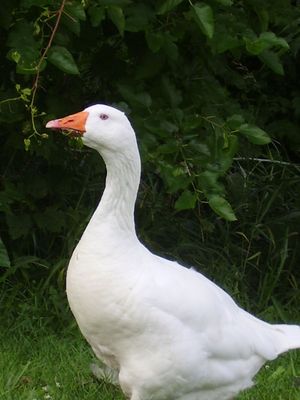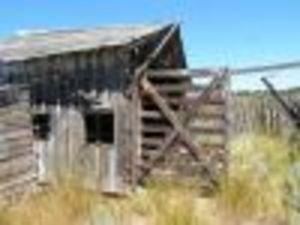The reasons for raising geese are many. The reasons for NOT raising geese add up too! There are many advantages to geese but equally many things people are not prepared for when ordering the goslings or seeing those cute little peeping things at the feed store. There are things the staff doesn’t tell you!
The bad things first! Goslings are messy! Scratch that. Goslings are MESSY! As with any waterfowl they drink water, they play in water, they throw water everywhere and due to an endless appetite they produce endless poop! If you look at a large tub and say “oh this will hold them” think again! It will need at least daily cleaning to keep the odors down. As the goslings figure out what water is that might be twice per day. When you’re frustrated filling the
water AGAIN remember one thing – it’s only for a couple of weeks! This brings to the good things.
Geese are hardy. Once they feather out they are incredibly hardy animals. Unless teased or mistreated geese are not mean but they can be territorial especially when nesting. Treat a nesting goose like a tiger – with respect!
Get a good waterfowl starter to get your goslings started on. Don’t get chick starter just because “everyone uses it”. Chicks are a different ballgame. Goslings grow much faster and eat much more than chicks. The medications in chick starter can actually overdose goslings in some cases. If you can’t find non-medicated chick starter then make a high protein starter from small grains. Resist the temptation to use ground grains like corn meal. It’s better for the goslings to get larger pieces as the ground foods tend to get wet and make a ball…and remember the goslings and water! You’ll need enough starter to get the goslings through about three weeks and let them have as much as they want. As fast growing birds they have hearty appetites.
The other thing to watch carefully is temperature. For the first week keep the goslings under a heat lamp where the temperature under it is 95 degrees F. Have it secure so it does not touch the bedding and start a fire! This can be raised to lower the temperature 5 degrees per week.
Once the goslings have feathers coming in rather than down it is safer to let them out in nice weather. Use caution on ponds or water until they get feathers in. Wild or goose-raised goslings have an oily residue that repels the water which the brooder raised goslings don’t have. They can get chilled easily during the time of adjustment. Once feathered have a secure fenced in area and let them graze! Geese are grass eating machines! They are wonderful in small orchards where you don’t want equipment coming in. However they do need some protection from predators, especially dogs and until they’re nearly full grown owls and hawks. Once they start honking more than peeping it’s generally safer from owls.
Geese will also need protection from hot weather. Make sure there is plenty of shade for geese. They can handle cold much better than heat. Plenty of clean water is important but keep geese out of creeks and streams or chances are you’ll never see them again. They’ll follow the water to infinity or to a predator’s meal!
There are different breeds of geese from the Chinese with a large knob on the bill to the grey Toulouse. The Pilgrim, long favored on American farms, is a breed unique in that males are white and females are grey. With these goslings you can tell from the time they’re hatched if they’re males or females.
Geese are incredibly hardy once they get feathered out. As grazers they’ll take little to no feed if you have plenty of grass for them. They will let you know if something strange approaches. Sometimes, as one brown Chinese goose I had once, they’ll climb up in your lap and rest their head on your shoulder if you patiently handle them as youngsters.
For those looking to raise geese for the freezer, some advise grain feeding the last week or so while other people prefer just finishing on grass. Geese can grow much faster than you expect and are wonderful large birds to be around if handled well from day one.
Although they can be a pain as babies when you walk out to the barn and they gather around you honking in excited greetings you’ll forget how messy they were. They’re so pretty out in the field and really don’t take any time. Hey look! The poultry catalog arrived…you need a few more now!




